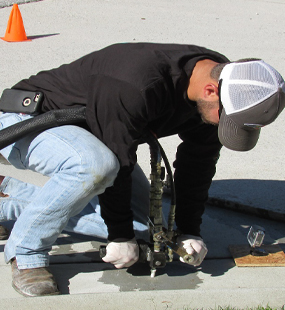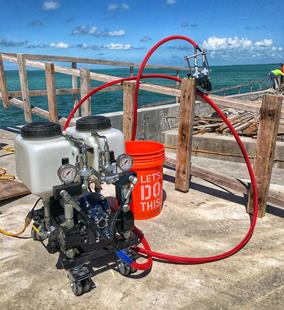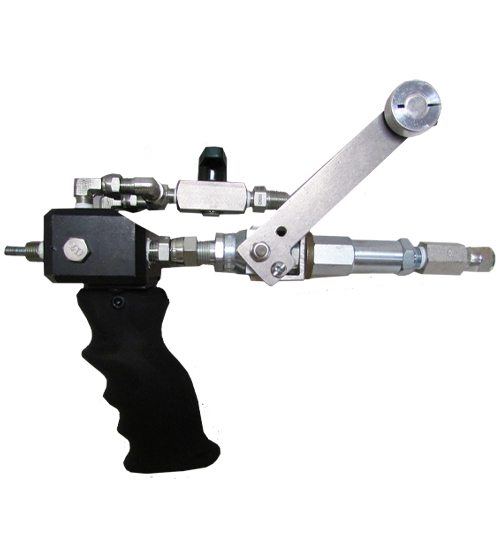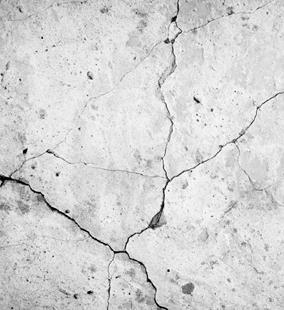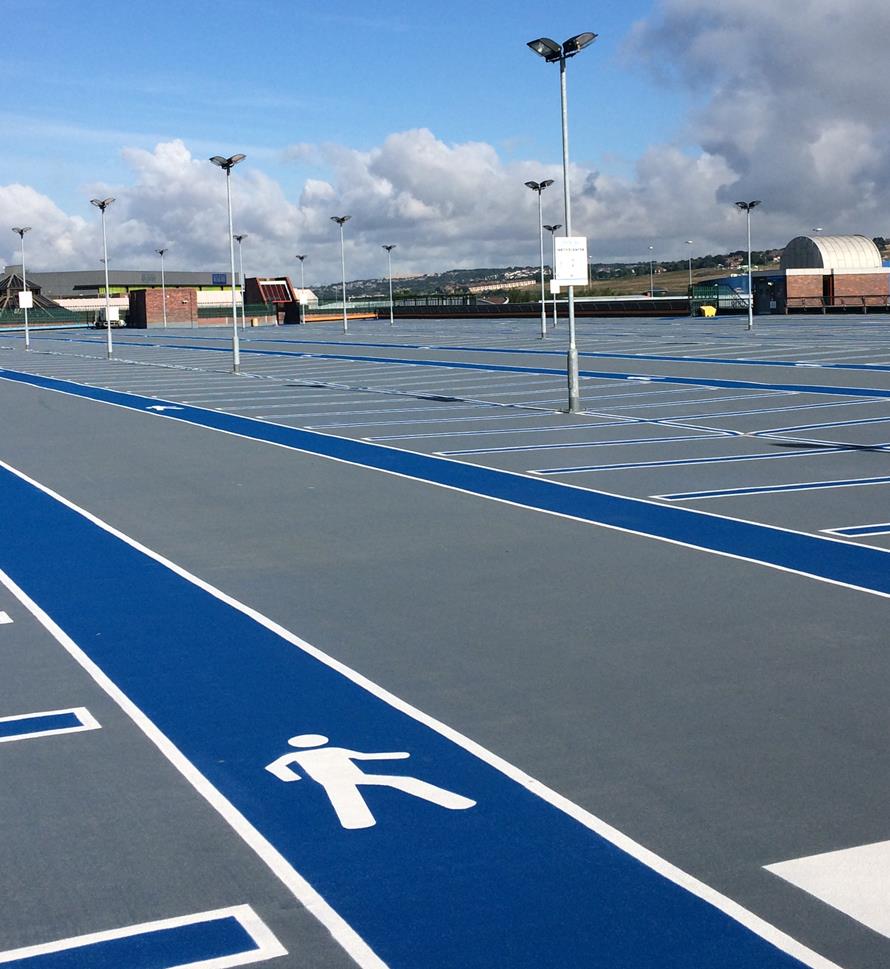
- Home
-
Solutions
-
Leak Seal
Seal leaks in concrete or masonry with crack injection and curtain grouting of our Prime Flex polyurethanes and AR acrylate resins. Prime Resins offers superior solutions for stopping leaks in every type of environment.
Read More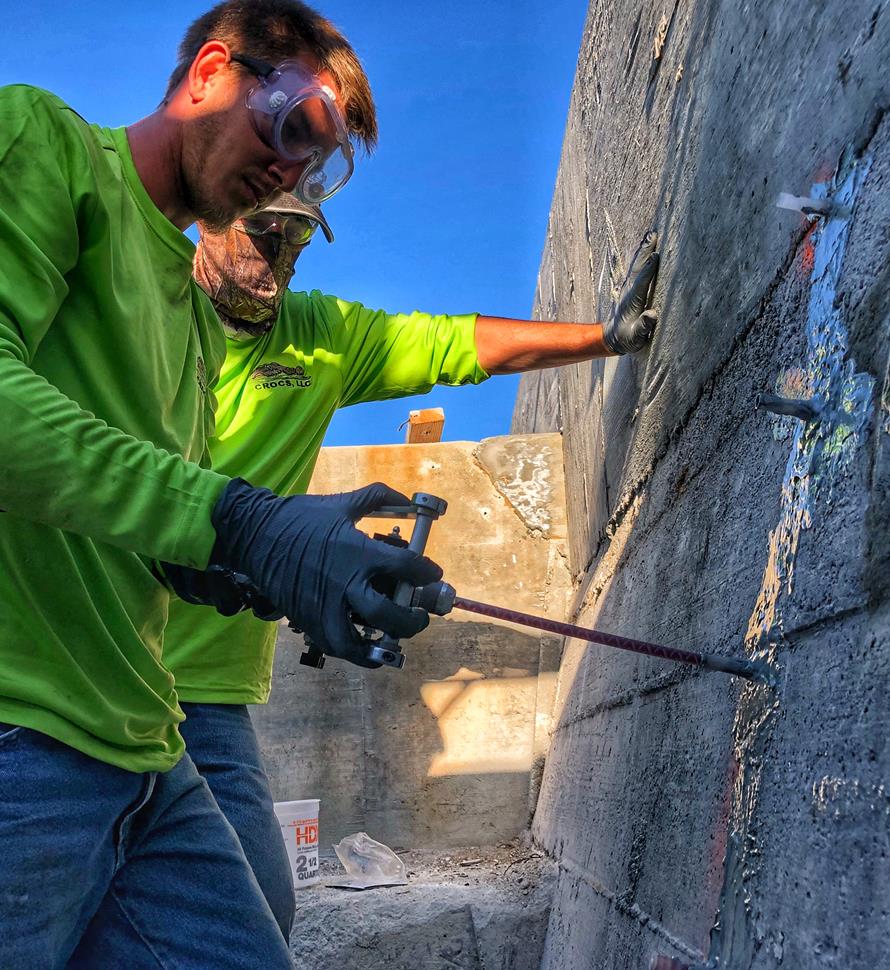
-
Soil Stabilization
Sound concrete relies on a sound substrate. Stabilize soils and fill voids with our polyurethane and acrylate foams and gels. We make chemical grouts for permeation and compaction grouting in wet and dry conditions.
Read More
-
Slab Lifting & Stabilization
Slab lifting and slab stabilization with polyurethane foams offers many advantages over traditional mudjacking. Only Precision Lift is engineered to tackle underlying issues and slab lifting with precise, dependable results.
Read More
-
Floor Repair & Joint Protection
Spalled concrete is concrete that is chipped, cracked and deteriorating. This often happens at a joint.
Read More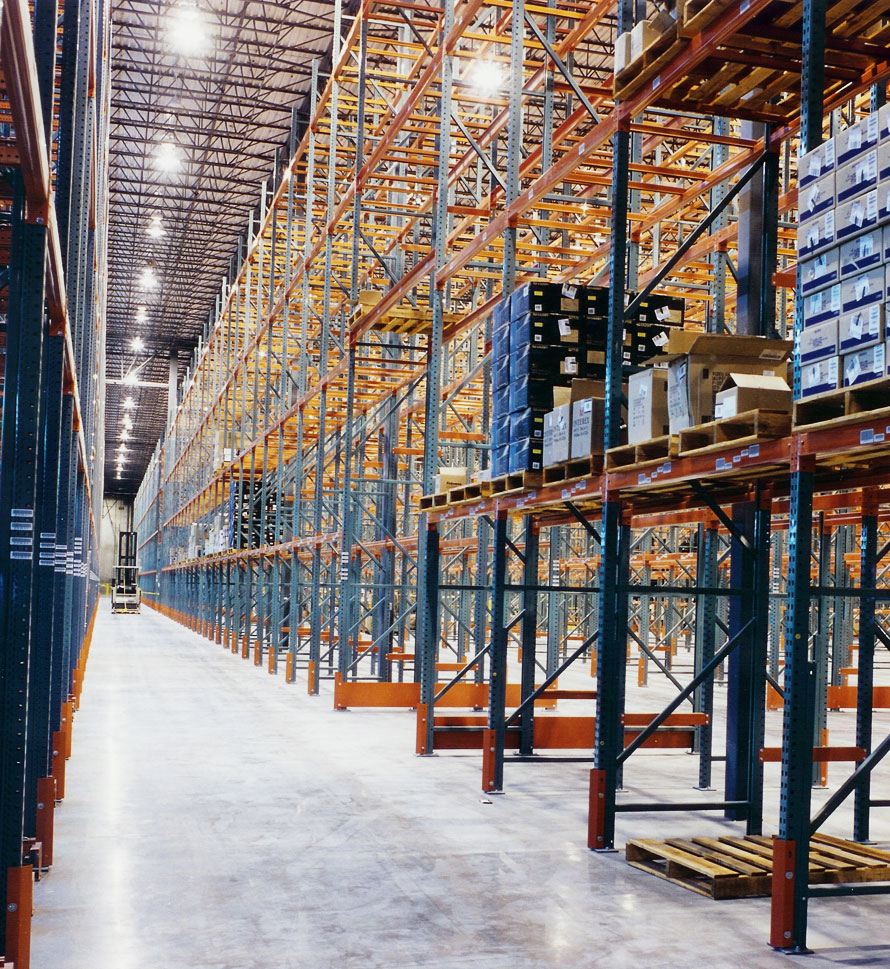
-
Seawall Repair
You can repair a seawall or bulkhead with Prime Resins chemical grouts: fill voids, stabilize loose soil and seal leaks at a fraction of the cost of wall replacement.
Read More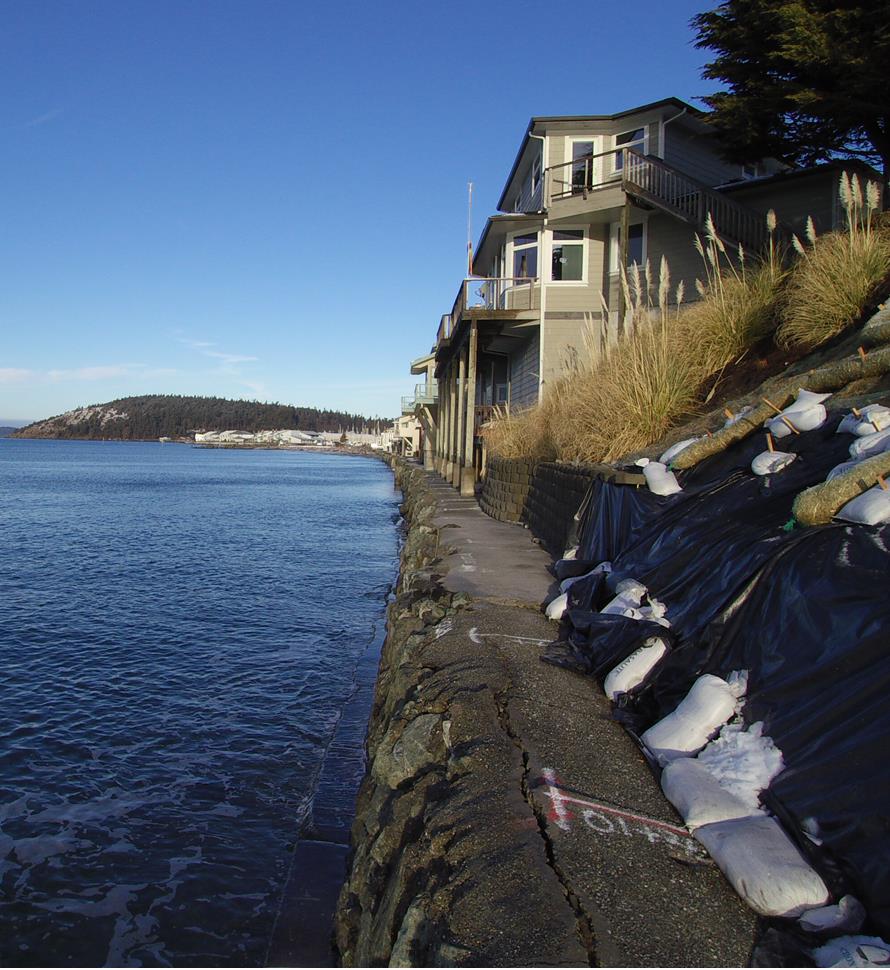
-
Structural Repair / Bonding & Anchoring
The need for crack repair in concrete structures can be caused by many different factors. Damage can occur to the concrete in situations where direct impact puts stress on one area of the structure.
Read More
-
Highway & Bridge
The geotechnical needs of DOTs and other agencies responsible for roads and bridges are vast. Issues include: Culvert repair Soil stabilization Void filling Concrete slab lifting Sinkhole remediation Slope control Slough control in tunneling
Read More
-
Waterproofing & Secondary Containment
Protecting concrete usually means shielding it from the elements of nature or from harsh manmade chemicals. But it’s not just concrete that needs such protection. Corrugated metal pipe, steel surfaces, material hoppers, rail cars and masonry all can come in contact with corrosive or abrasive materials or harsh conditions.
Read More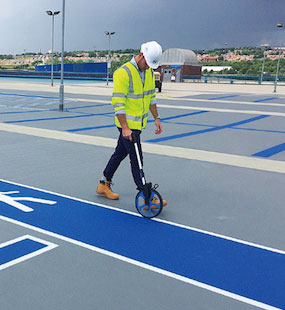
-
Leak Seal
-
Products
-
Leak Repair
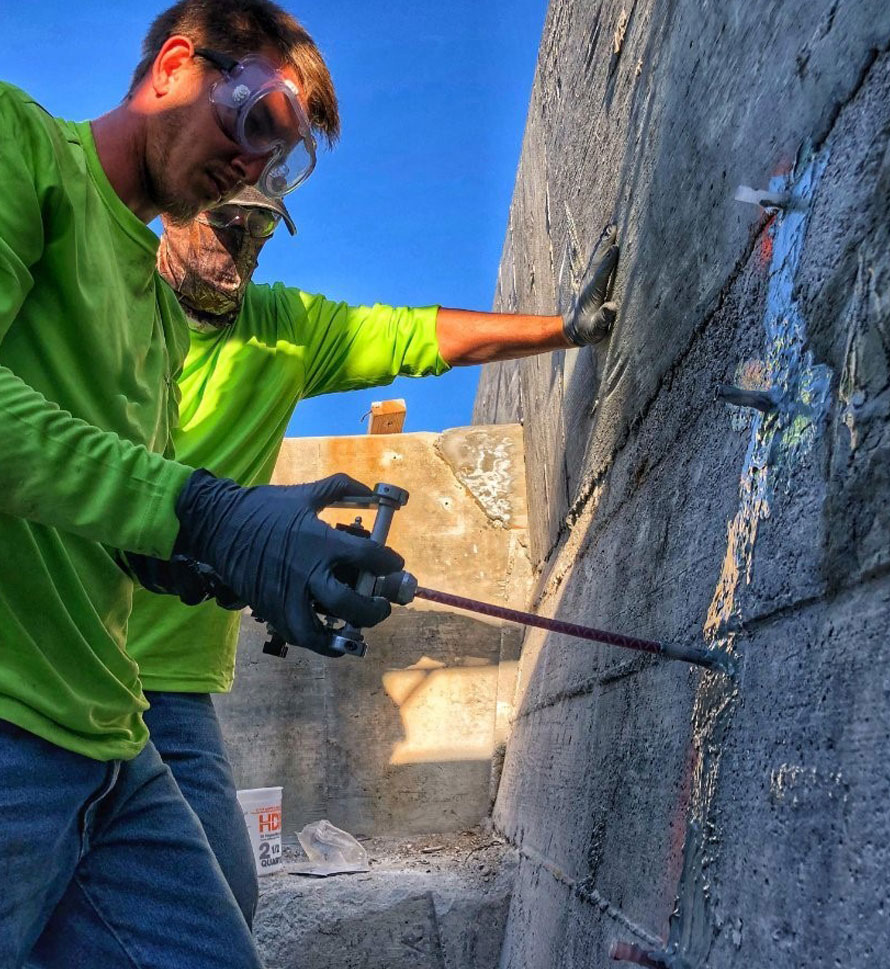
-
Soil Improvement
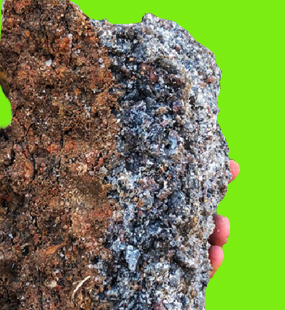
- Soil Stabilization
- Slab Lifting
- Structural Repair / Bonding & Anchoring
- Pumps
- Dispense Guns & Applicators
-
Turnkey Trailer Rig
Are you ready to hit the ground running doing concrete leveling with polyurethane foam? Prime Resins offers the industry’s best suite of products for lifting concrete as a turnkey, fully equipped trailer rig.
Read More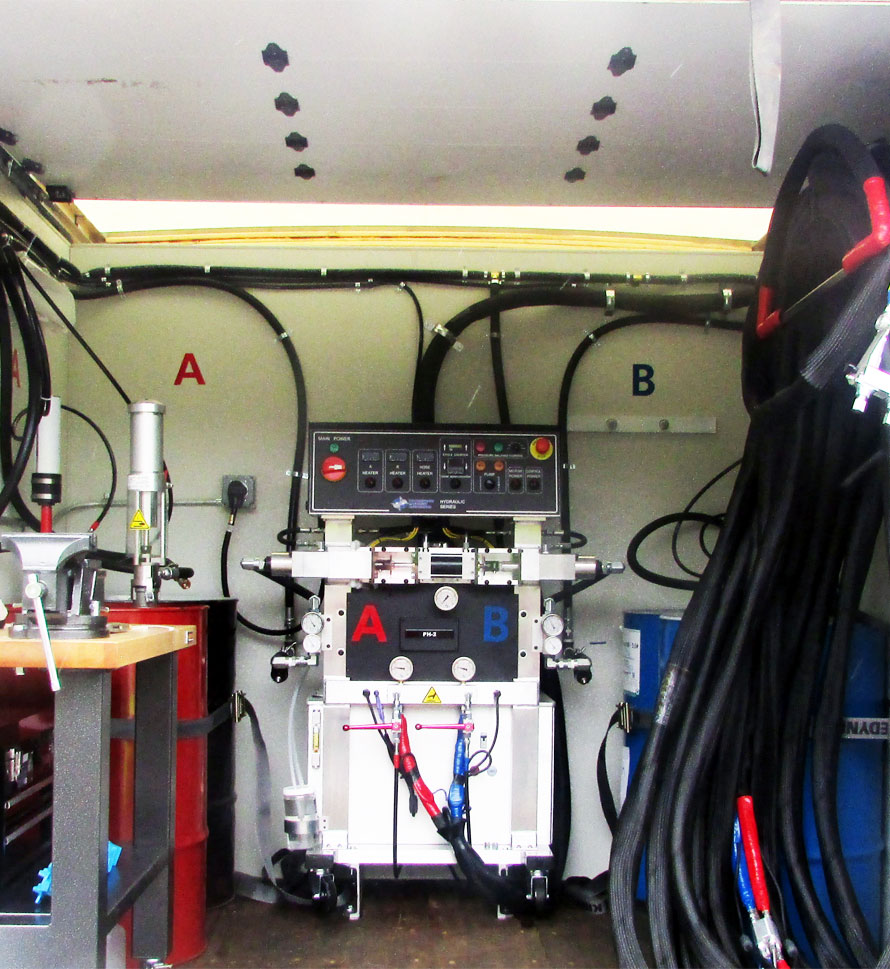
-
Accessories (General)
- 3/4" expendable drive point
- 3/8" and 3/4" soil probes
- Cartridge / Port Connectors and Mixers
- Conduit Seal Kit
- DM500 Divorced Mix Manifold
- Eco Flush
- F Valve
- Flush Wand
- Grout Needle Kit
- High Pressure Control Valve
- High Pressure Mechanical Ports
- Kick Fast
- Low Pressure Plastic Ports
- PR11 TEA (used w/ PR10 ACLM)
- PR12 APSF catalyst (used w/ PR10 ACLM)
- PR17 LYTX
- Prime Kat
- Prime Plug
- Prime Solvent CGC
- Oakum
- Soil pipe jack
- Stainless Steel Grout Needle & Kit
- StainShield
- Wall Stinger Nozzle
-
Soil Grouting Accessories
- Pipe Coupler
- Pipe Coupler Ferrule
- Buttonhead Coupler - Straight
- Buttonhead Fittings
- SG 3/4" Expendable Drive Tip
- SG 3/4 Rod - 39" Base
- SG 3/4 Rod - 39" Connector
- SG 3/4 Rod - 19.5" Base
- SG 3/4 Rod - 19.5" Connector
- SG 3/4 Fitting - Pipe to Buttonhead
- SG 3/4 Fitting - Buttonhead Fitting
- IL 1/2" Drive Point
- IL 1/2" rod - 39" base
- IL 1/2" rod - 39" connector
- IL 1/2" Fitting Buttonhead
- SG 3/4" Fitting - Buttonhead Coupler
- SG 3/4" Slotted Drive Tip
- SG 3/4 Drive Head
- Modified Pipe Jack Soil Grouting
- SG 3/4 Fitting - Buttonhead Coupler
- Pagani DPM30 Penetrometer
- IL 1/2" Fitting - Buttonhead to Connector Rod
- IL 1/2" Rod to Rod Coupler Fitting
- High Pressure Flow Control Valve
- Buttonhead Coupler - 90°
- Buttonhead Clamp Kit
- Floor & Joint Repair
- Waterproofing & Secondary Containment
-
Leak Repair
- News
- Downloads
-
Tools
-
Case Studies
Prime Resins takes pride in its ability to find the right solutions to the problems facing our customers. Here are some examples of customers’ successful jobs:
Read More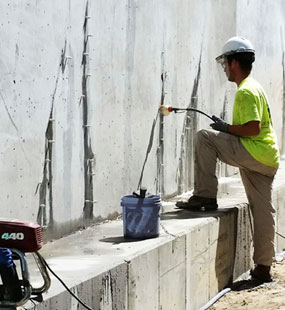
-
Prime Practices
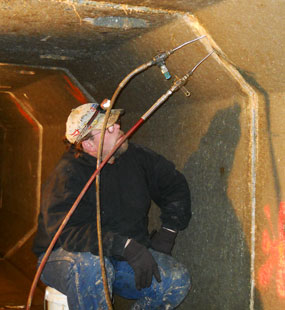
-
Videos

-
Estimating Tools & Info.

-
Why us?
The superior quality of products at a fair price, our consultative approach, and our unparalleled technical support set Prime Resins apart. Learn more about the Prime difference.
Read More
-
Product Types & Typical Uses
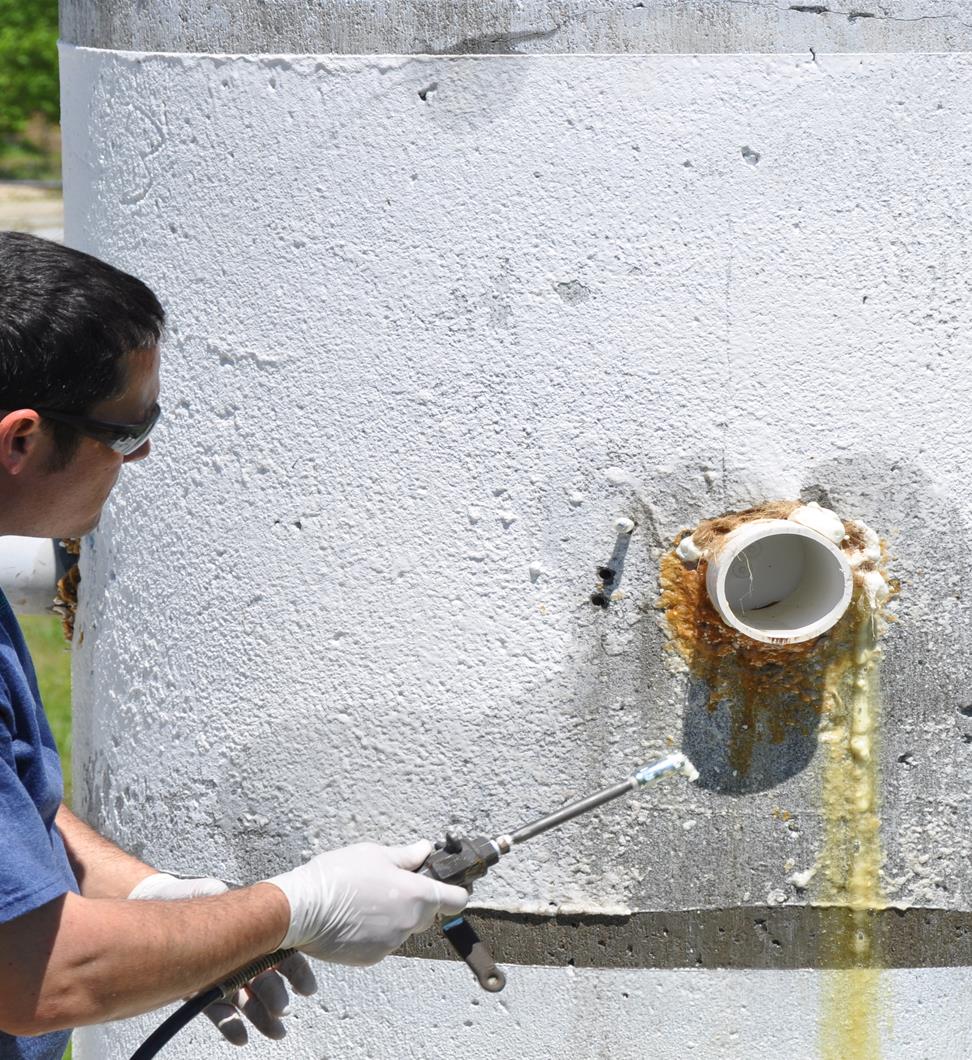
-
Looking for a contractor?
-
Certifications
-
Case Studies
- Contact
Case Studies- Floor Repair Pages
Repairing failed cement grout underneath steel floor plates
Contractor: T. Luckey & Sons, Inc., Harrison, OH
Client: Caterpillar, Lafayette, IN
SCENARIO: In order to easily move some of the largest diesel engines in the world Caterpillar uses an air-powered hydrofoil to lift the massive engines on a cushion of air. For this system to function safely, 3/8” solid steel plates had to be attached to the existing concrete floor. The steel plates were anchored to the floor with 1” bolts and shimmed to create a ¾” (on average) gap between the bottom of the steel plates. The plates were welded together and the welds ground down to form a smooth, flat surface.
A cement-based grout was pumped under the steel plates to fill the gaps. Over time, the cement grout began to break down and fracture severely in multiple locations. This ultimately made the steel plates deflect, causing the hydrofoil to lose its lifting ability and causing an unsafe condition
T Luckey Sons used Prime Rez 1000 & 1200 to repair cement grout that had failed beneath steel plates on their engine production facility floor. (Photo is copyright of T Luckey Sons Inc and is used with permission.)
Caterpillar officials intended to remove the steel plates and underlying damaged cement grout base then re-install the plates and re-grout with cement grout. The cost and downtime required to perform this, however, was simply not a scenario Caterpillar could consider.
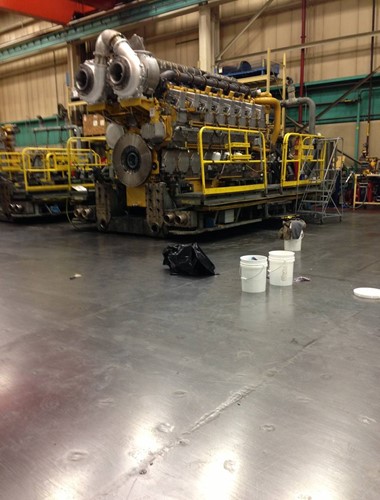
SOLUTION: Caterpillar asked T. Luckey Sons Inc. for alternative options. T.L.S. recommended injecting Prime Resins’ Prime Rez 1000 & 1200 through small 3/8” holes drilled through the steel plates on an approximate 3’ on center grid pattern. Caterpillar contracted T. Luckey Sons Inc. to test grout an area approximately 20’x20’.
The test area was a success and after a three-month observation period, Caterpillar contracted T.L.S. for the remaining areas. In some places, multiple passes were needed because some of the underlying cement grout was so crumbled, almost like crushed potato chips.
OUTCOME: The work was completed in five or six days during normal weekend downtime. The floor was traffic-ready after 12 hours of curing. The project was completed with a fraction of the cost of replacement. The hard cost of the injection solution–not even taking into account lost production for a prolonged shutdown–was less than 5% of replacement.
Proven track record: “We’ve built a track record of injecting under toppings,” says Randall Brooks, TLS general manager. “We can show a lot of examples of successful injection so engineers can see that there are viable, cheaper options than tear out and replacement.”




